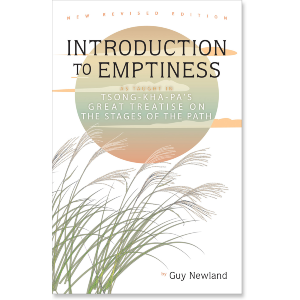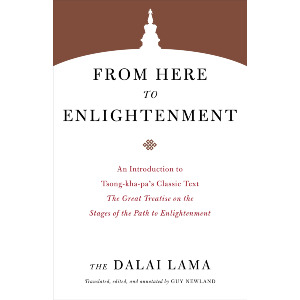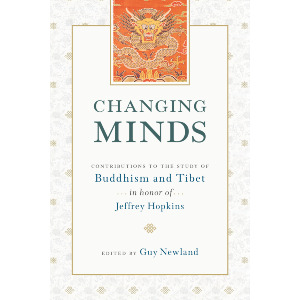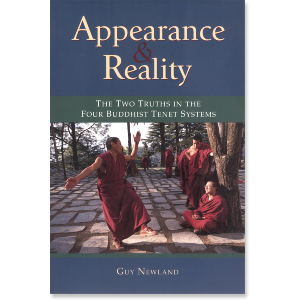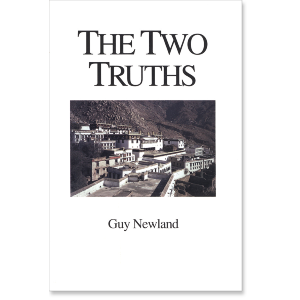Christine Cox: You’re known for being able to convey the complexities about what emptiness is—and isn’t—in fresh ways that most people can understand. Have you had students who hear about emptiness, get a taste of it, and freak out? As in Omigod, what happened to my world?
Guy Newland: I do hear stories about people who, when they hear about emptiness, their hair stands up and they begin to cry. They feel that they’ve come home. My students haven’t reacted that dramatically, but some get very excited because the ideas about emptiness express something that they somehow always knew about the world but didn’t have a way to say. That makes sense to me [laughs]. We’re full all the time with all the information we need to refute our wrong views. We walk around as a bundle of contradictions, in a certain sense. It’s not surprising that some people would say Oh yes, this finally helps me make sense of the confusion I’ve had about how things are.
CC: On the other hand, perhaps there are people for whom emptiness teachings may not be currently helpful.
GN: People who are having psychological problems already of one sort or another, whether it’s issues with their own sense of identity or difficulties feeling any sense of boundaries between themselves and the world, probably should not be spending a lot of time thinking about emptiness.
CC: In your book you use an ingenious array of examples—from burning one’s mouth on pizza to dueling attorneys (to explain how Bhavaviveka and Chandrakirti’s views differ!)—to demonstrate quite subtle points about emptiness.
GN: Using things that are part of people’s common experience works well. For example, students can recognize that when they’re filled with desire, the object of their desire seems to be intrinsically or naturally appealing. As soon as you can see that, you’re on to identifying the object of negation. It really helps to get a sense that distorted ways of seeing things as having their own intrinsic nature is how we ordinarily look at the world. And that comes to the fore when we have strong afflictions present.
CC: This is probably an unfair question, but how would you encapsulate the various views on emptiness in Buddhism?
GN: Well, some traditions focus on the idea that emptiness is the absolute reality, the fundamental thing that exists, and that other things that appear are illusions. The practices involve allowing the fundamental purity that is the nature of things to shine out. I think that’s a common way to practice in Tibetan Buddhism; you can find parallels to it in other Mahayana traditions outside of Tibet as well.
And then there is another way of looking at things. It doesn’t disagree with that, exactly, but it shifts the focus a little and says, well, nothing absolutely exists. Nothing, including emptiness, exists in and of itself. Everything exists only conventionally because everything exists only interdependently. This is fundamentally true of even emptiness itself. That’s what Nagarjuna said; that’s what he meant when he said not to take dogmatic views of emptiness. He meant not to reify emptiness as an absolute essence. Therefore, in this view, emptiness is another conventionally existing thing. All things exist conventionally. Emptiness is the name that we give to one particular existing thing: the fact that nothing exists ultimately. And that’s a very different way of talking about things.
 This latter way of talking about things predominates in Nagarjuna’s Fundamental Treatise and in Chandrakirti and in Tsong-Kha-pa’s Great Treatise. These texts are not opposed to the idea of saying that emptiness is the fundamental reality. They do believe that emptiness is the final nature of things. But they want to avoid having that be understood as an absolute essence.
This latter way of talking about things predominates in Nagarjuna’s Fundamental Treatise and in Chandrakirti and in Tsong-Kha-pa’s Great Treatise. These texts are not opposed to the idea of saying that emptiness is the fundamental reality. They do believe that emptiness is the final nature of things. But they want to avoid having that be understood as an absolute essence.
I could probably boil it down: Do you think of emptiness as a kind of absolute essence of pure mind? Or do you think of it as the lack or absence of any essence? Anywhere? At all? Which way do you want to approach this? They’re really different, I think. Both of these views have scriptural basis in the Mahayana. Both of them have strong practice lineages in Tibet. I think HH the Dalai Lama has made a large effort in some of his teachings, such as in Kindness, Clarity, and Insight, to try to bridge these and show that they are both legitimate aspects of the Mahayana tradition and that people should see that these are both medicines that are in the Buddhist pharmacy, not distortions of the dharma.
CC: Understanding emptiness—not only conceptually but also experientially—seems to be a prerequisite for many Buddhist practices, certainly for tantra. How deep a realization of emptiness is needed before one begins the tantric path?
GN: It seems to me if you’re getting into self-generation as a deity, that should be done on a foundation of understanding emptiness, or you open yourself to danger in the practice when you’re visualizing yourself as a divine being. You have to understand that it’s an empty divine being—it’s a problem if you don’t, right? Good teachers understand that, but what they choose to do with it in terms of how they actually teach their students could be different.
For example, Lama Yeshe would say that it’s not expected that all students will have already realized emptiness as they start to do visualizations. So he would suggest that they think of space as a way to imagine emptiness. This recommendation has a scriptural basis—it says in one of the Perfection of Wisdom sutras that space is the best example people can use to think about what emptiness is like.
CC: In Great Treatise, on which your book is based, Tsong-kha-pa puts forward the idea that conceptual thought is not the root cause of our problems, but rather a tool for liberation.
GN: Of course that’s an absolutely core idea in the book. People sometimes have the idea that if they would simply stop thinking about things—sort of bury their heads in the sand—that problems would go away. They think that all that’s needed is to practice a deep kind of concentration—very, very focused and one-pointed. It could be a very peaceful state of mind that relieves us of all our ordinary troubles.
The wish to do this is deeply in us—kids will go on a merry-go-round until they’re dizzy just to stop their ordinary experience, or roll down a hill—which is what I did as a kid. Something within just wants a break from the constant talking in our heads—which can lead to sex or drugs or drumming, for example. The problem, of course, is that it doesn’t get at the root of our problems. If we don’t strengthen our thinking and analyze more carefully, then we don’t get at what’s really causing our suffering. Then as soon as the non-conceptual vacation is over, we come back to the same problems that we had before. They haven’t changed at all.
If the suffering world is only a thought-construction, then stopping thought does seem to be the most liberating move. Yet as Tsong-kha-pa famously argues, another step beyond this, seeing that not thinking is not enough, is at the very heart of what it means to be a Buddhist. Other religions have profound ethics, and techniques for accessing amazing non-conceptual states, but Buddhism claims the distinction of a penetrating analysis of how the world exists. Only by engaging this analysis, and engaging it conceptually, does one create the basis for real liberation from unnecessary misery. As Ch’an master Sheng Yen teaches, practice is not about stopping thought, for if it were, your teacher could just whack you in the head with a hammer.
CC: It sometimes feels that way…
GN: Yes! Once you have this understanding of how things exist, developed through careful analysis, you use the power of mental focus, developed in concentration and meditation, and make this understanding of emptiness the focus of your practice. That way you combine these two kinds of Buddhist meditation—the kind that involves focusing your mind and making it a powerful instrument, and the analytical power, discriminating and discerning and working out exactly how things exist. This is the path of preparation, preparing yourself to go into nirvana.
CC: Our editor described your book as being as close to a page-turner as a book on emptiness can get. I imagine you must have metabolized the various viewpoints on emptiness through yourself in order to present them so clearly.
GN: First of all, I was the main editor of Volume Three of the Great Treatise. It was a big challenge. That part of the book wasn’t written as an introduction; it was written for other scholars within the tradition to make it clear exactly what distinctions Tsong-kha-pa had sorted out and exactly how they were based in the Indian shastras. As a translator I had to understand it; one can’t just put the words into English without knowing what he’s saying. What I tried to do in Introduction to Emptiness is explain the ideas as I would to students—whether at universities or dharma centers. I had to say to myself, hey, what’s Tsong-khapa’s real point here and how can I express it in a way my readers will understand?
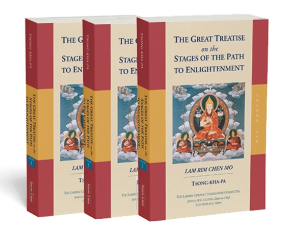


 This latter way of talking about things predominates in Nagarjuna’s Fundamental Treatise and in Chandrakirti and in Tsong-Kha-pa’s Great Treatise. These texts are not opposed to the idea of saying that emptiness is the fundamental reality. They do believe that emptiness is the final nature of things. But they want to avoid having that be understood as an absolute essence.
This latter way of talking about things predominates in Nagarjuna’s Fundamental Treatise and in Chandrakirti and in Tsong-Kha-pa’s Great Treatise. These texts are not opposed to the idea of saying that emptiness is the fundamental reality. They do believe that emptiness is the final nature of things. But they want to avoid having that be understood as an absolute essence.